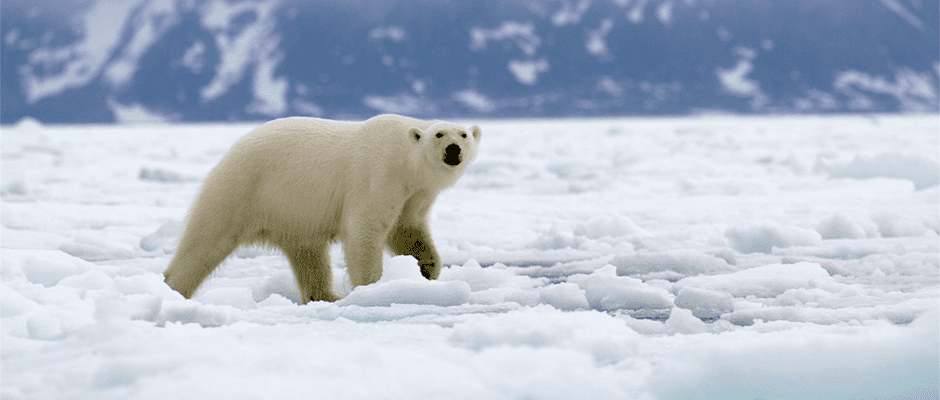Share this article
Are polar bears changing their diet?
Deep in the Western Hudson Bay, populations of bearded seals are declining. As polar bears prey on these seals, researchers wonder how similar changes in prey availability could potentially affect the large mammals’ diet.
Typically, researchers use stable isotopes — elements that naturally occur in the bears’ hair and blood — to determine what the animals eat and how they process their food. However, there are some challenges associated with that tool. “The challenge is when a bear eats 50 percent salmon, the salmon isotopes aren’t the exact ratio,” said Karyn Rode, lead author of a new study that looks to perfect the use of stable isotopes in better understanding polar bears’ diets. For instance, Rode, a research wildlife biologist at the U.S. Geological Survey and member of The Wildlife Society, noted the food could be deposited as fat or go immediately to meeting the bears’ metabolic needs. As a result, Rode said, “We have to understand the physiological processes to use that tool.”
As part of the study published in the journal Physiological and Biochemical Zoology, researchers studied two polar bears at the Oregon Zoo as well as two polar bears at the Alaska Zoo and 12 grizzly bears at Washington State University. They sampled the captive bears’ hair and blood after completing a “surf and turf” experiment where they switched the bears’ terrestrial diet with marine foods. By doing this, Rode and her colleagues hoped to better understand what the bears ate by estimating correction factors to account for the animals’ physiology. They determined how long it took for tissues to reflect in their current diet since marine and terrestrial foods have different carbon and nitrogen isotope levels.
Further, Rode found stable isotopes from blood or hair can determine what a bear ate up to six months prior to collection, rather than one month, which was previously thought.
With better correction factors, Rode hopes to more accurately estimate polar bear diets from hair and blood that has been collected up to three decades before including when sea ice changes occurred. Rode plans to similarly study two Alaskan polar bear populations — one in the southern Beaufort Sea in the north slope of Alaska to western Canada and the Chukchi Sea population from the west coast of Alaska to eastern Russia — to determine if their diet has changed. “The captive work helps us establish the method,” she said. “If we can improve the stable isotope tool, we can determine their diet from their hair and blood.”
Header Image: ©follistpeter








